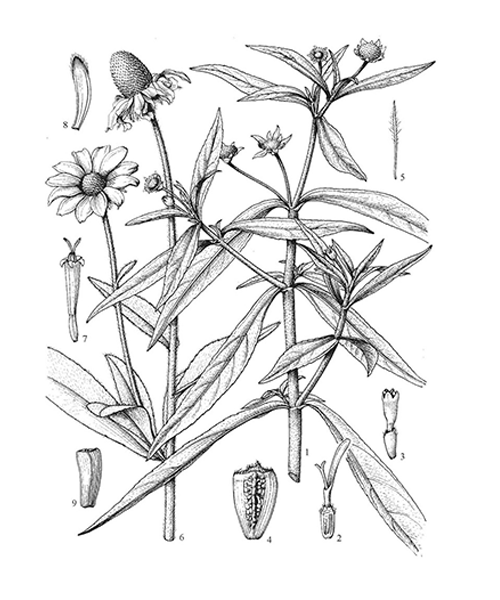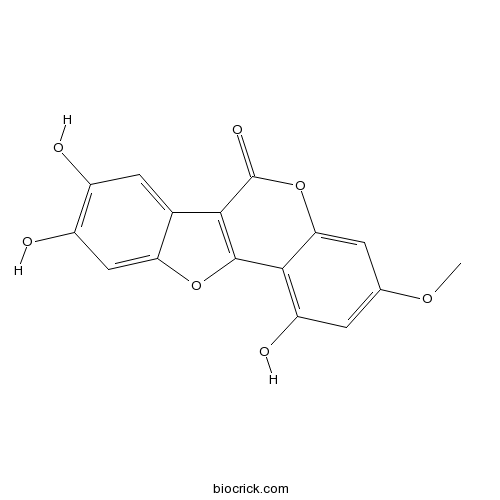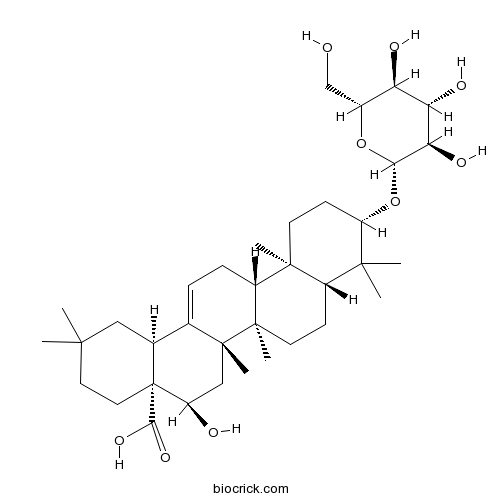Eclipta prostrata
Eclipta prostrata
1. The products in our compound library are selected from thousands of unique natural products; 2. It has the characteristics of diverse structure, diverse sources and wide coverage of activities; 3. Provide information on the activity of products from major journals, patents and research reports around the world, providing theoretical direction and research basis for further research and screening; 4. Free combination according to the type, source, target and disease of natural product; 5. The compound powder is placed in a covered tube and then discharged into a 10 x 10 cryostat; 6. Transport in ice pack or dry ice pack. Please store it at -20 °C as soon as possible after receiving the product, and use it as soon as possible after opening.

Natural products/compounds from Eclipta prostrata
- Cat.No. Product Name CAS Number COA
-
BCN8244
Eclalbasaponin I158511-59-2
Instructions

-
BCN2766
Isodemethylwedelolacton350681-33-3
Instructions

-
BCN5553
Orobol480-23-9
Instructions

-
BCN5628
Echinocystic acid510-30-5
Instructions

-
BCN5672
Wedelolactone524-12-9
Instructions

-
BCN5388
Luteolin-7-O-glucoside5373-11-5
Instructions

-
BCN3820
Stearic Acid57-11-4
Instructions

-
BCN2663
Demethylwedelolactone6468-55-9
Instructions

-
BCN3843
Ecliptasaponin A78285-90-2
Instructions

Antimetastatic effects of Eclipta prostrata extract on oral cancer cells.[Pubmed: 29962088]
Eclipta prostrata, a traditional Chinese medication, has been used for the treatment of several diseases. However, the molecular mechanism underlying the effects of Eclipta prostrata extracts (EPE) on human oral cancer cell metastasis remains unclear. We thus examined the effects of EPE on metastasis promoting proteins in oral cancer. Our results revealed that the EPE attenuated SCC-9, HSC-3, and TW2.6 cell migration and invasiveness by reducing matrix metalloproteinase (MMP)-2 enzyme activities. In addition, Western blot analysis revealed that EPE significantly reduced the levels of phosphorylated extracellular signal-regulated kinase 1/2 (ERK 1/2) but not those of c-Jun N-terminal kinase (JNK) 1/2 and p38. In conclusion, we found that EPE could inhibit oral cancer metastasis through the inhibition of MMP-2 expression. Therefore, EPE may be used to prevent the metastasis of oral cancer, and has the potential to be applied to cancer treatment.
Regulation of Eclipta prostrata L. components on cigarette smoking-induced autophagy of bronchial epithelial cells via keap1-Nrf2 pathway.[Pubmed: 29726624]
Cigarette smoking extract (CSE)-induced autophagic injury has been regarded as an important contributor to the pathogenesis of lung cancer. We previously found that Eclipta prostrata L. component (CCE) reduced CSE-induced bronchial epithelial cells damage. However, the mechanism remains unknown. Human normal bronchial epithelial cells (NHBE) were exposed to CSE to establish stress model. Nrf2-siRNA and Keap1-siRNA transfection were performed. mRFP-GFP-LC3 dual fluorescence and transmission electron microscopy were used to observe the autophagic characteristics. CCE prevented CSE-induced Nrf2 transfer into cytoplasm and up-regulated Keap1 level of NHBE cells. Furthermore, CCE significantly increased p-p16, p-p21 and p-p53 phosphorylation levels in Nrf2-siRNA- or Keap1-siRNA-transfected cells. As demonstrated by transmission electron microscopy and mRFP-GFP-LC3 dual fluorescence assays, CCE mitigated autophagic injury, and also down-regulated autophagy-related Beclin-1, LC3II/LC3I ratio, Atg5 and ATF4 levels. Our findings showed the attenuation of CCE on CSE-induced NHBE cells injury was associated with Nrf-2-mediated oxidative signaling pathway.
Protective effects of a traditional Chinese herbal formula Jiang-Xian HuGan on Concanavalin A-induced mouse hepatitis via NF-κB and Nrf2 signaling pathways.[Pubmed: 29421593]
Jiang-Xian HuGan (JXHG) formulated by five natural products including Freshwater clam (Corbicula fluminea), Curcuma longa L., Ligustrum lucidum, Eclipta prostrata (L.) L. and Paeonia lactiflora Pall., has exhibited a great hepatoprotective effect.
Validated UPLC-MS/MS method for quantification of seven compounds in rat plasma and tissues: Application to pharmacokinetic and tissue distribution studies in rats after oral administration of extract of Eclipta prostrata L.[Pubmed: 29349861]
A rapid, sensitive and specific ultra-high-performance liquid chromatography coupled with tandem mass spectrometry (UPLC-MS/MS) method was developed to investigate the pharmacokinetics and tissue distribution of Eclipta prostrata extract. Rats were orally administrated the 70% ethanol extract of E. prostrata, and their plasma as well as various organs were collected. The concentrations of seven main compounds, ecliptasaponin IV, ecliptasaponin A, apigenin, 3'-hydroxybiochanin A, luteolin, luteolin-7-O-glucoside and wedelolactone, were quantified by UPLC-MS/MS through multiple reactions monitoring method. The precisions (RSD) of the analytes were all <15.00%. The extraction recoveries ranged from 74.65 to 107.45% with RSD ≤ 15.36%. The matrix effects ranged from 78.00 to 118.06% with RSD ≤ 15.04%. To conclude, the present pharmacokinetic and tissue distribution studies provided useful information for the clinical usage of Eclipta prostrata L.


